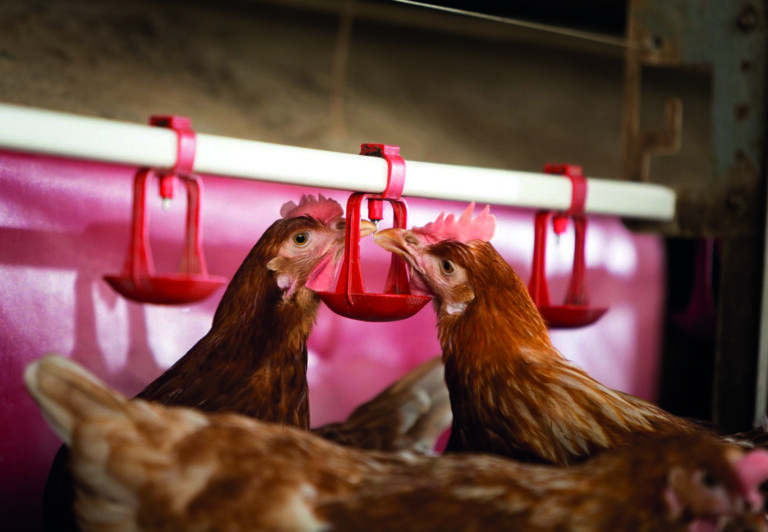Extending the duration of lay to keep laying hens longer is a proven way to reduce the carbon footprint of egg production through increased lifetime performance.
“To achieve a longer laying cycle and increase efficiency it is important to improve feed and feeding techniques,” says Chloe Paine, poultry technical manager at Trouw Nutrition GB. “In layer production, the majority of greenhouse gas emissions are linked to feed formulation. Understanding the environmental footprint of poultry feed enables farms and feed mills to optimise their operations and reduce overall impact, but this cannot be assessed in isolation.”
To drive down carbon footprint (CO2/kg egg), Paine stresses it is essential to also improve production efficiency. While the most direct way of reducing the impact of egg production is through the feed, the nutrients in this feed need to be absorbed by the bird and used efficiently for optimal production. Maintaining high levels of gut health and liver health are key to this.”
Paine says layer hen longevity involves a multifactorial approach beyond feed formulation. All nutrients used by the bird are absorbed through the gut. Anything that compromises gut health will reduce performance and feed efficiency.
“A healthy gut ensures optimal nutrient and mineral absorption and is essential for shell quality. Supporting gut health through various options is good practice. For example, incorporating organic acids into poultry feed may reduce enteric infections in addition to aiding feed decontamination. Organic acids have the ability to penetrate the cell membrane of bacteria and interfere with the regular functions of specific types of bacteria, such as Salmonella species, E. Coli or Clostridium species. They also enhance food digestibility, by boosting endogenous digestive enzyme production and activity.”
Digestive and nutritional absorption are impacted when gut health is compromised, which may have a negative impact on feed conversion. There is also a greater risk to poor skeletal health, calcium deficiency, and decreased eggshell weight that leads to weaker and thinner shells, she adds.
A stable, diverse microbiota and strong gut wall are important for gut health. Trouw Nutrition solution Presan-FY offers an integrated approach to gut health by helping stabilise the resident microflora population whilst simultaneously boosting gut barrier integrity and function. It includes the optimal combination of medium chain fatty acids and organic acids to bolster the function of the intestinal barrier and stabilize the microbiota.
Maintaining high-quality egg production throughout an extended laying cycle also requires an efficiently functioning liver. The liver is a vital organ that is involved in a wide range of functions. These include the metabolism of fat, carbohydrate, protein, vitamins and minerals, and the removal and detoxification of waste products. The liver is also involved in part of the activation of feed fed vitamin D3 into its active form. The active form of Vit D3 is essential in the bird’s calcium mobilisation cycle.
“Any problem that affects the integrity of the liver will have an adverse effect on the action of vitamin D3, calcium absorption and metabolism and ultimately eggshell quality.
Managing mycotoxins is a particularly important management task. Aflatoxin and ochratoxin attack the liver and kidneys respectively, reducing vitamin D metabolism. This reduces the bird’s ability to absorb calcium from the diet and transport it to the shell gland and medullary bones. Mycotoxins have been linked to lower eggshell strength related to the impairment of calcium, zinc and D3 metabolism.
Highly pure smectite clays, the foundation of Trouw Nutrition’s mycotoxin risk management program, effectively lower the bioavailability of a wide range of mycotoxins. They do this by stopping mycotoxins from entering the hens’ digestive systems where they can have negative effects. Additionally, the use of refined ß-glucans and glucose biopolymers stimulates the immune system and the function of the intestinal barrier.
“By ensuring layers have high levels of gut and liver health, it will be possible to extend productive life, improve feed efficiency and reduce the carbon footprint of egg production,” Paine says.


